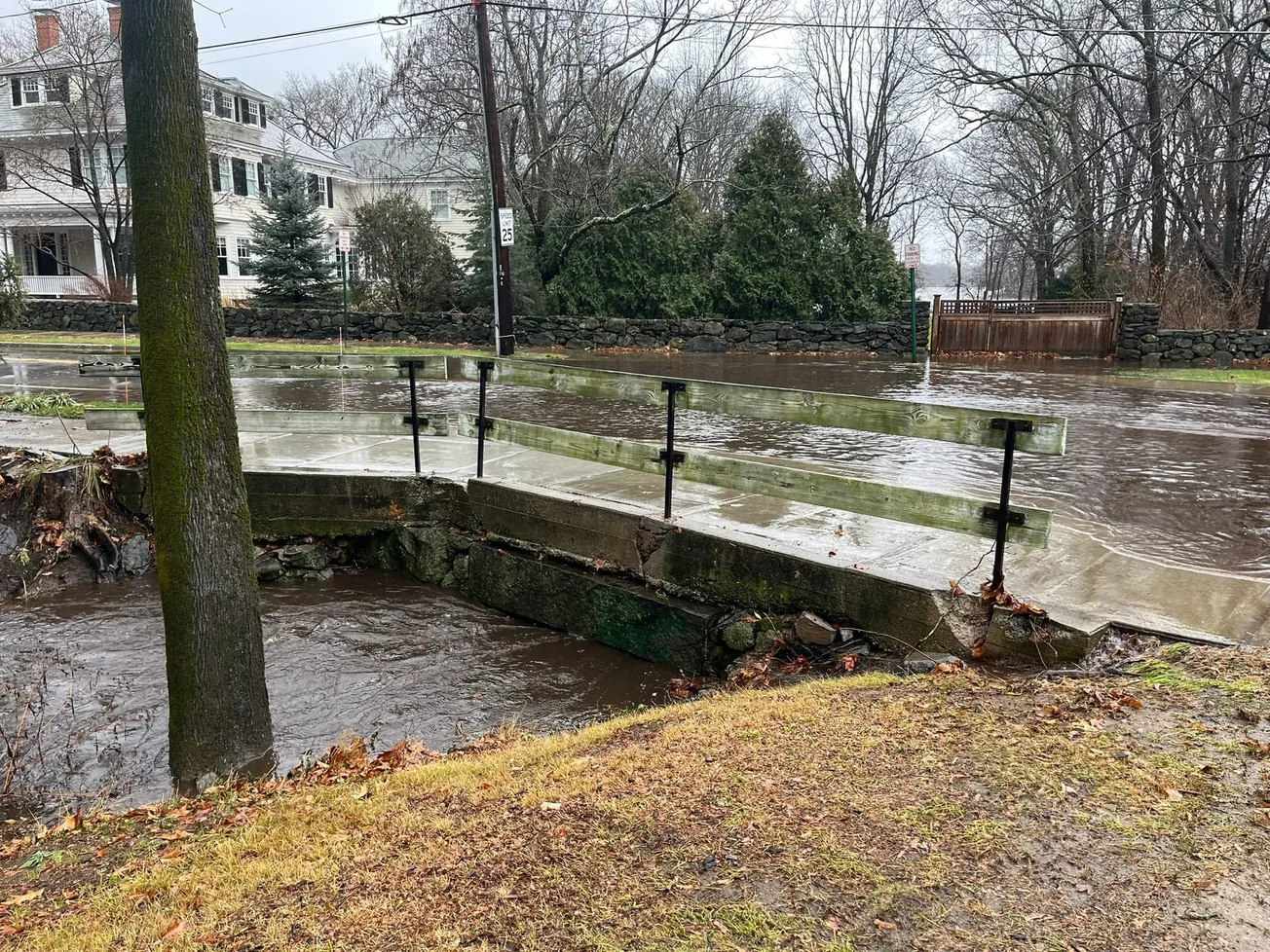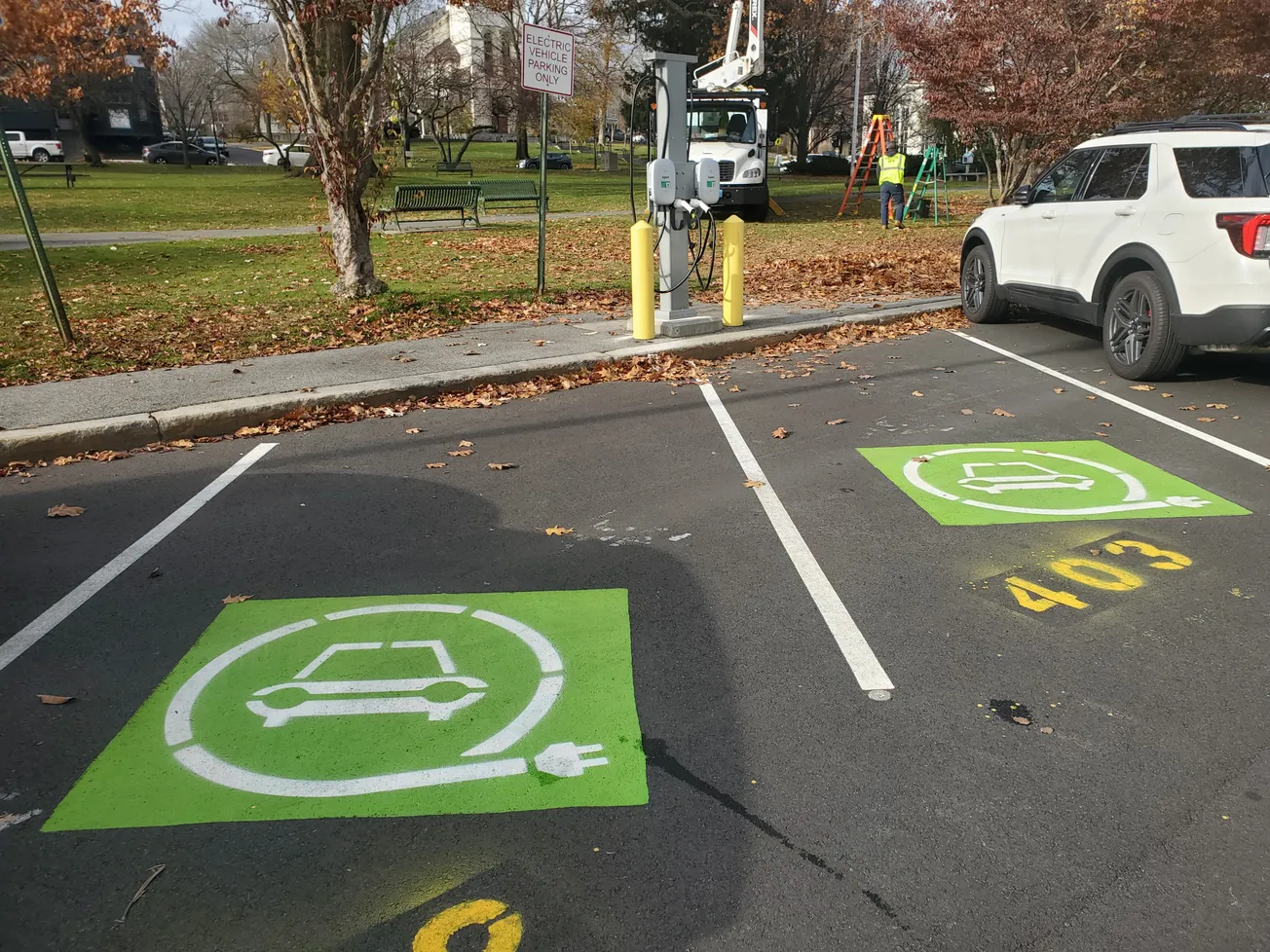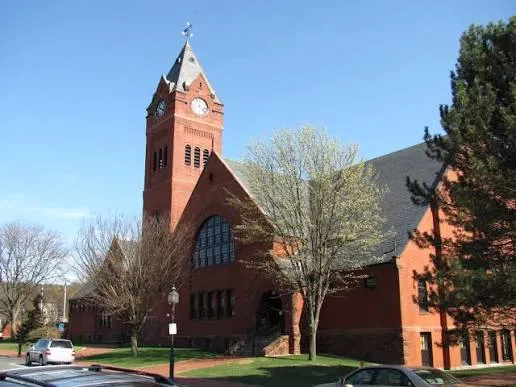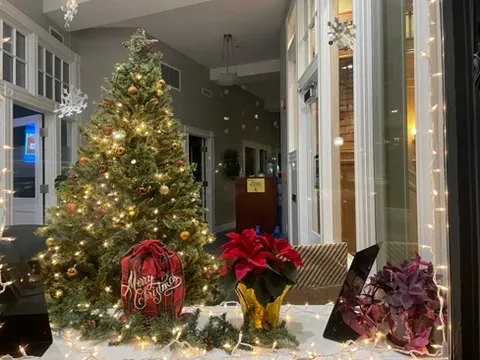Table of Contents
It’s one of Winchester's finest streets, lined with manicured lawns and grand homes, many with spectacular views of the Mystic Lake. But a few times a year, when Mother Nature acts up and dumps torrential rains, one end of Everett Avenue becomes almost impassable due to flooding.
At first glance, the culprit appears to be a little-known culvert running under the Cambridge Street end of Everett Avenue. No one knows the age of the culvert and the town’s engineering department has no documented plans for it other than a vague street plan from 1898.
Most travelers along Everett Avenue probably never noticed the culvert’s existence. When Winchester’s Town Meeting last fall declined a request from the Capital Planning Committee to fund a $100,000 request for an engineering study, it prompted the staff at Winchester News was to ask: “what culvert?”
Everett Avenue resident Richard Norsworthy has been an observer of the water flowing though the culvert since he moved there seven years ago.
“I first heard a rumor that it was connected to the [Middlesex] canal. But my neighbor said no, it has nothing to do with that," he said. "It seems to be drainage from streets, but it has increased over the years, like the amount of water flowing through.
"When I first moved here seven years ago, it was a trickle most of the time, it was always moving," he continued. "In the recent years, it’s really gotten some depth to it. The problem with this culvert is that it overflows when we get torrential rainstorms."
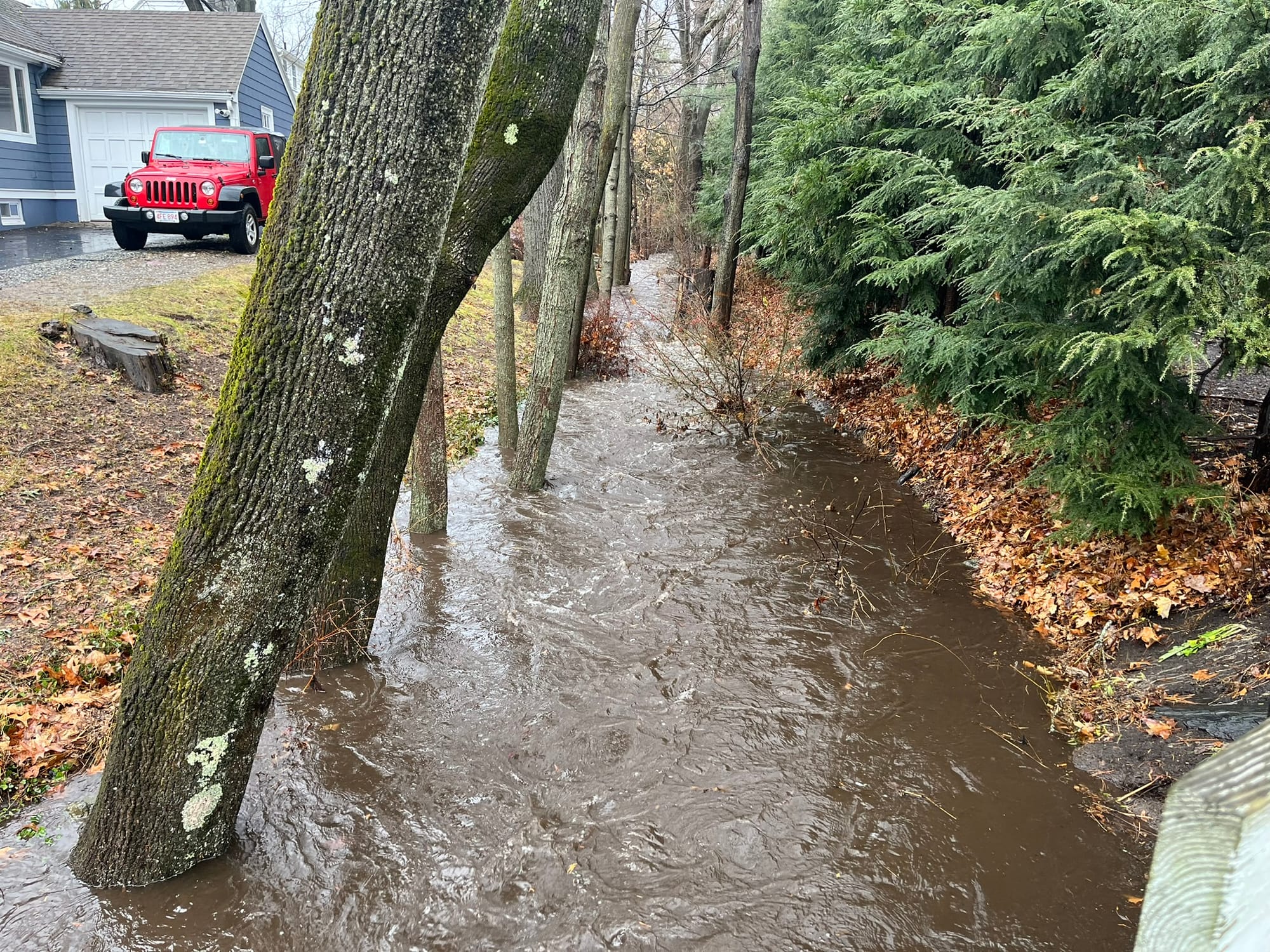
Culvert has unknown history
Town Engineer Matthew Shuman said the town has very little information on the culvert.
"We have no construction drawing of this culvert," Shuman said. "That gives you a sense of how old it is. The earliest plan we have is from 1898 and it shows it, but it’s not a construction plan. It’s about 6 feet wide and 4 feet tall."
Last summer, the town asked an engineering design company, VHB, to inspect the culvert and develop a preliminary cost estimate for making repairs.
In a memo to the assistant town manager from Shuman, the culvert is described as of unknown age with no record of drawings and the inspection report detailed multiple types of deterioration, erosion, loose stones and a substandard railing.
The report from VHB said that although the deficiencies did not need immediate repair, it did recommend completing repairs as soon as possible to avoid further deterioration.
Winchester’s Capital Planning Committee voted in its Nov. 21, 2023 meeting to ask the Select Board to approve available ARPA (American Rescue Plan Act) funds to pay for the engineering work needed for necessary repairs to the culvert, citing public safety and bridge repairs as imperative.
The Select Board voted 4-1 in favor of approving the funds. Select Board member Michelle Prior was the only member voting against approving the funds.
During the Select Board meeting, it was asked if the project was available for ARPA funding and Town Manager Beth Rudolph said, “We can use ARPA funds.”
Winchester News reviewed a Select Board meeting document from the Oct. 5, 2023 Select Board meeting in which the Summary of Capital Projects lists the culvert as not eligible for ARPA funding. When asked this week about the discrepancy of eligible or not eligible, Rudolph said “that must be a typo. The project was approved and is going ahead.”
Work being done?
The culvert project has been on Rudolph’s radar screen for some time. She mentioned during the Nov. 27 Select Board meeting, “this [the culvert] has been on my list for years.”
Rudolph was previously the town engineer. She mentioned the state does not inspect bridges or culverts of this small size.
Shuman said the state does, however, inspect some bridges.
“Some of the other bridges in town are on a routine inspection with the state and this one wasn’t," he said. "We have no record of inspection. No record of construction. The bridge is about 70 feet long, it’s a fieldstone culvert, made out of fieldstone on the sides and it’s got granite slabs on the top. Which is a pretty old construction technique.”
The lack of official plan documents leaves the town with only guesswork about the age and construction.
“I’ve seen culverts built like this before," Shuman said. "They’re old. In some cases, I’m not sure about this one since there are no plans. They originally would build the stone wall for the channel of the culvert and at a later date, they would cover it over with the granite, but this was built I’m sure as a bridge, to bridge the brook so it was probably all built at the same time.”

Original drawings are not detailed and there's very little known about the history of the Everett Avenue culvert. WINCHESTER NEWS STAFF PHOTO/PETER CASEY
The engineering work to be done is expected to produce working ‘bid documents” that can be used to solicit construction bids from outside contractors.
Repair estimates are in the $300,000 to $500,00 range, which is expected to extend the life of the culvert for 10 to 15 years.
If it is discovered during the engineering work that repairs are not possible then the project would pivot to a replacement instead of a repair project. Replacement costs are estimated to be $900,000, which would extend the life of the culvert to about 75 years.
The flooding
So, where does the water come from? Norsworthy points out another culvert type structure a few hundred feet upstream from Everett Avenue.
“What you’ll see is a little concrete drainage thing and the water comes out of there and from what I understand, nobody understands where the water actually comes from," he said.
Shuman calls the water source a hidden infrastructure.
“It’s taking a lot of street drainage and drainage from the neighborhoods. Again, we have no plans," he said. "I wouldn’t be surprised if there was a brook there that they, over time, buried, closed up and built around. It drains a large section of the flats and then some of the west side.
"There is a short section of stream and then upstream from that is all buried underground," he continued. "And it does go through the Glenn Road, Glenn Green area and fans out though the neighborhoods.”
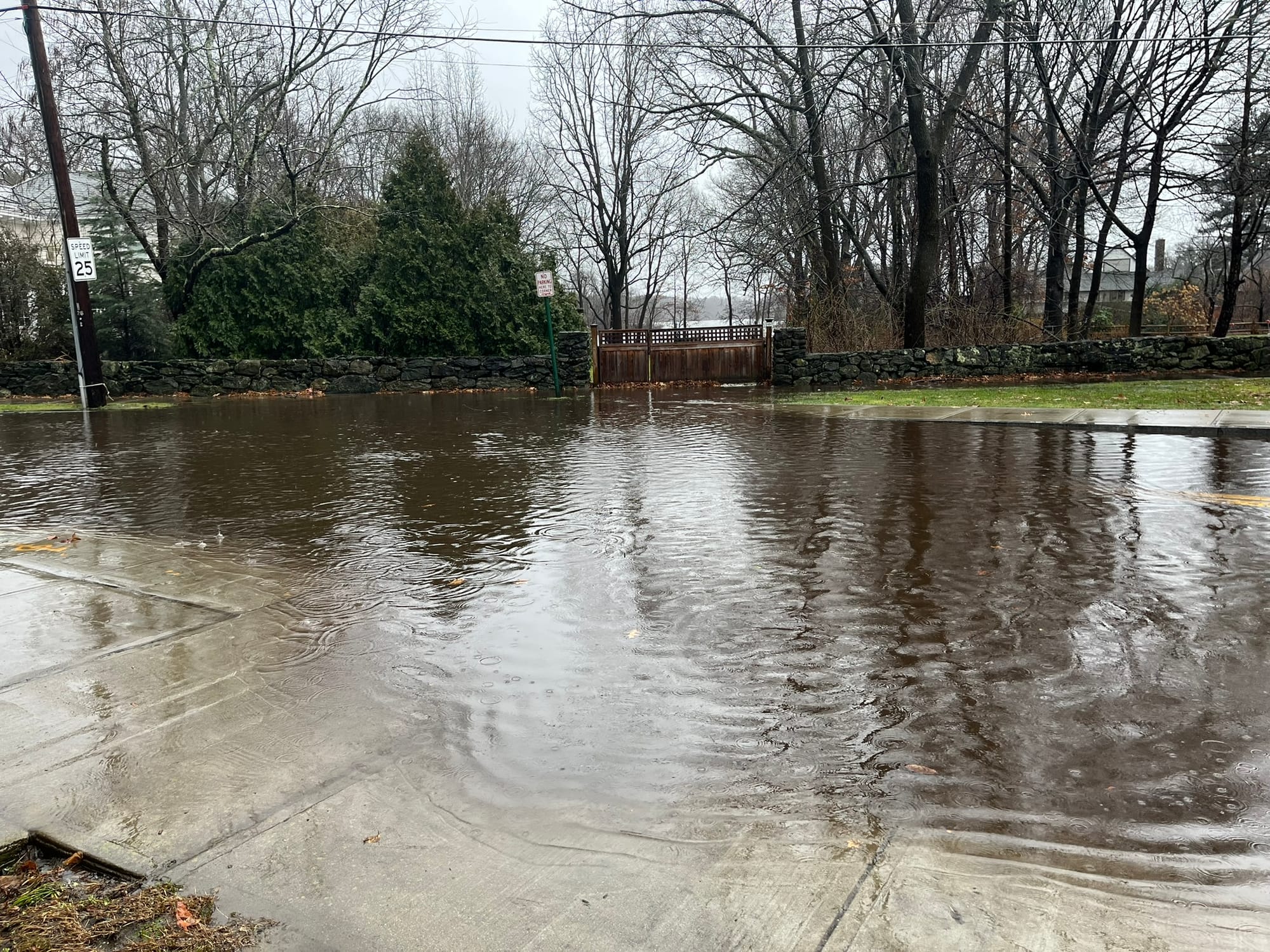
What remains unclear is if, after the culvert is repaired, will the flooding of Everett Avenue be resolved?
During the storms of Dec. 18, 2023, Everett Avenue was flooded from curb to curb, spanning the full 70 feet of the culvert. But while the culvert appeared at its peak capacity, it was not overflowing into the street.
The drainage of rainwater coming from Cambridge Street seemed to be the likely source of the flooding and was actually draining water into the culvert.
“Because this is happening during such intense rainstorms, it’s really hard to mitigate," Shuman said. "The town in other areas has put in infiltration and storage chambers that help mitigate that peak that comes down. We’d have to really look at the area more to understand what was going on. One clogged catch basin can cause more water at the next catch basin which then causes flooding so it’s a complicated issue.
"Everyone’s struggling with what the solutions are," he added. "Making sure we are maintaining our drainage, but residents can help out by checking their catch basins, too.”
Winchester News is supported by our community. Please donate to support our work.

